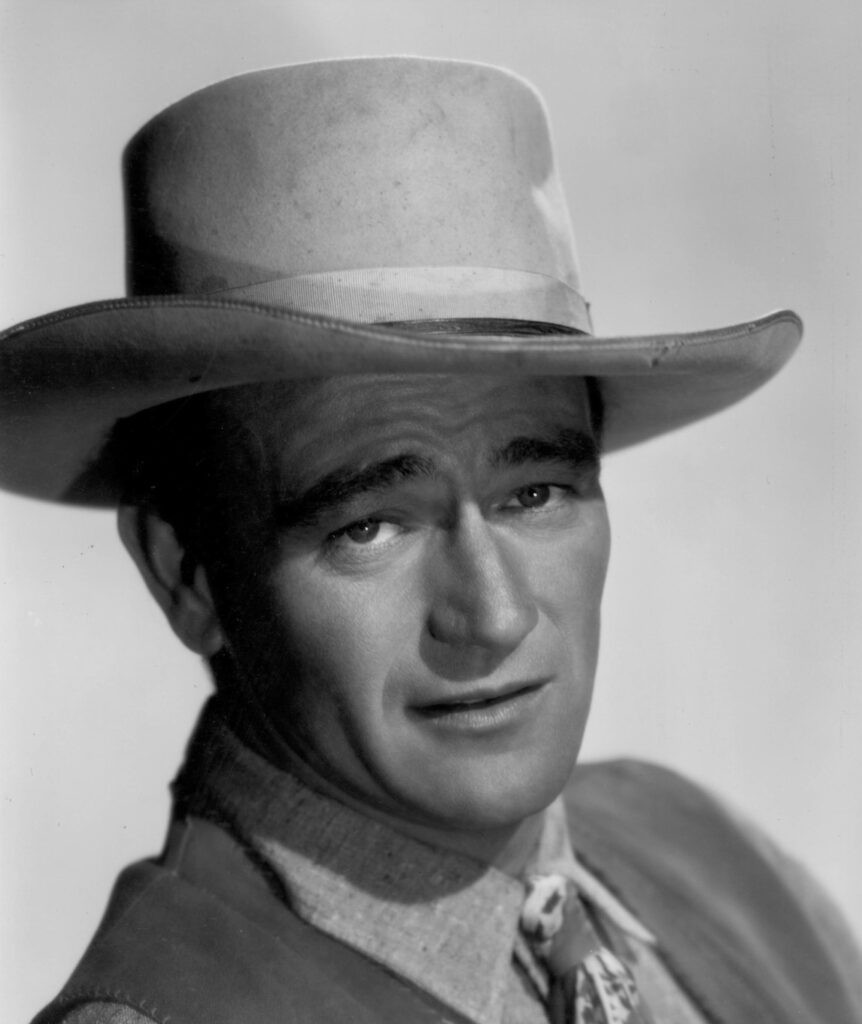John Wayne, an enduring symbol of American cinema and the quintessential Western hero, forged a career deeply rooted in the Golden State. While his birthplace was Winterset, Iowa, it was California that molded Marion Morrison into the John Wayne the world came to adore. His journey, intrinsically linked with California, spans from his childhood in Glendale to his iconic status in Hollywood and beyond.
 John Wayne, the iconic American actor, in California. His life and career were deeply intertwined with the Golden State, from his early days in Glendale to Hollywood stardom.
John Wayne, the iconic American actor, in California. His life and career were deeply intertwined with the Golden State, from his early days in Glendale to Hollywood stardom.
Wayne’s California story began when his family relocated to Glendale when he was just six years old. It was here, amidst the sunny landscapes of Southern California, that Marion Morrison became “Duke,” a nickname derived from his beloved Airedale terrier. This early Californian upbringing provided the backdrop for his formative years, setting the stage for his future Hollywood trajectory.
His connection to California deepened when he attended the University of Southern California (USC) on a football scholarship. Though injury curtailed his athletic aspirations, USC inadvertently opened another door. To earn money, Wayne took a summer job at Fox Film Corporation, a pivotal moment that steered him towards the silver screen. It was within the bustling studios of Hollywood, California, that he caught the eye of director John Ford, initiating his foray into acting with minor roles.
The transformation from Marion Morrison to John Wayne was further cemented in California’s filmmaking landscape. Director Raoul Walsh, recognizing his star potential, encouraged the name change before Wayne’s first leading role in The Big Trail (1930). However, it was the 1939 release of Stagecoach that catapulted him to stardom, solidifying his image as the rugged, charismatic hero synonymous with the Western genre – a genre deeply intertwined with the Californian and broader American West imagery.
Throughout his illustrious career, John Wayne remained closely associated with California. While his filmography spanned diverse genres, it was his Westerns, often filmed in Californian locations or evoking the spirit of the West, that resonated most profoundly with audiences. Even as he portrayed characters across various landscapes and conflicts, the essence of John Wayne, the California-grown icon, remained constant.
Beyond the silver screen, Wayne’s legacy in California extends to his philanthropic endeavors. Following his battle with cancer, his family established the John Wayne Cancer Foundation and the John Wayne Cancer Institute at St. John’s Hospital in Santa Monica, California. This enduring institution stands as a testament to his commitment to fighting the disease and a lasting contribution to the Californian community.
From his childhood in Glendale to his Hollywood reign and philanthropic impact in Santa Monica, John Wayne’s life and career are inextricably linked to California. He embodies the spirit of the Golden State – ambitious, resilient, and iconic – forever etching his name into both cinematic history and the cultural fabric of California.

